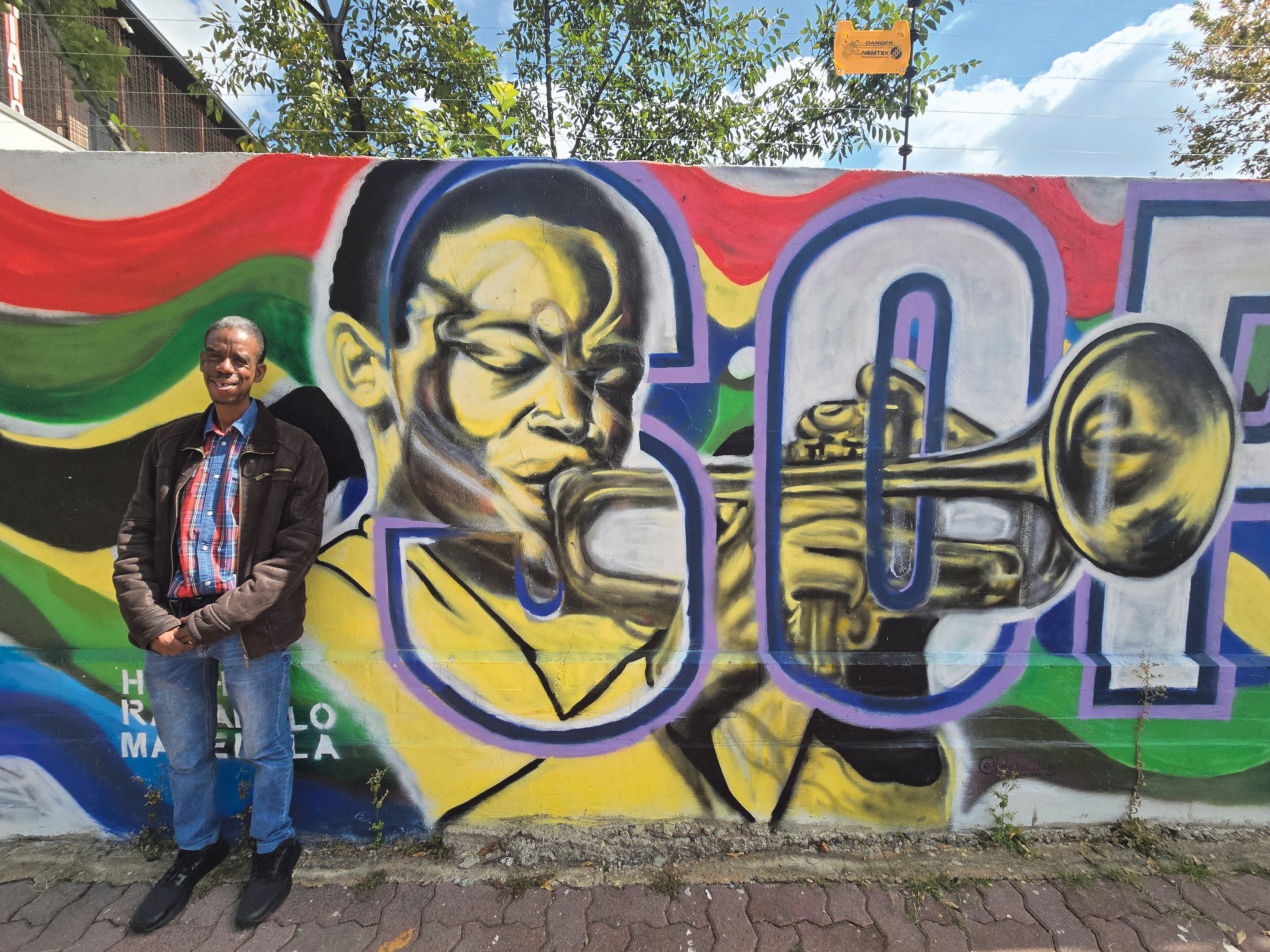From the early 1950s until the mid-1960s, the entire suburb of Sophiatown in Johannesburg was razed. Buildings were bulldozed and homes levelled, and armed police ensured the removal of all who lived there. It was replaced by a whites-only suburb named Triomf, the Afrikaans for “triumph”, and Sophiatown became the icon of all apartheid’s forced removals.
Today, Sophiatown is a pretty ordinary neighbourhood. It has a supermarket and shops, fast-food joints, a church, schools and a few scruffy parks. There are potholes, satellite dishes, razor wire, and burglar bars. The houses and yards are small; there are some apartment blocks and distant city views. It was renamed Sophiatown in 2006 and is a mainly coloured and black area.
It’s hard to imagine this as the mythical Sophiatown of the 1940s and 1950s, the cosmopolitan centre of intellectuals, radical politics, jazz and gangsters – the place that inspired novels, music, autobiographies, plays, films and paintings. It’s hard to picture this as the Rainbow Nation of the past, the little Chicago of Johannesburg, the land of the tsotsi. Kofifi, as residents called it, the lively mixed community was a thorn in apartheid’s side and was thus demolished.
It is indeed difficult to connect today’s ordinary Sophiatown with the mythical Sophiatown of yesteryear, but a visit to the Sophiatown Heritage Centre helps to join the dots and stirs the memory and imagination.
 Inside the house of AB Xuma, which houses an exhibition of photographs and memorabilia. (Photo: Bridget Hilton-Barber)
Inside the house of AB Xuma, which houses an exhibition of photographs and memorabilia. (Photo: Bridget Hilton-Barber)
Bright graffiti adorns the walls outside and a blue plaque confirms its heritage status – and pride.
The centre consists of the Trevor Huddleston Memorial Centre, which is a gathering place for community events, as well as the house of Dr AB Xuma, which is one of a handful of buildings that survived the brutal demolition. Alfred Bathini (alternatively Bitini) Xuma, commonly referred to by his initials, was the first black South African to become a medical doctor. He was also a leader, activist and president-general of the African National Congress from 1940 to 1949.
With its beautiful wooden floors and renovated interiors, Xuma’s house is a wonderful backdrop to photographs from Drum magazine, as well as historical memorabilia from when he practised there as a doctor.
The museum reflects the two distinct yet interconnected Sophiatown mythologies: one as the place that was razed by apartheid, the other as the place that produced some of South Africa’s most famous writers, musicians and politicians who contributed to the emergence of a black urban culture in the 1940s and 1950s.
Drum’s all-star cast of journalists included Henry Nxumalo, Todd Matshikiza, Nat Nakasa, Can Themba, Casey Motsisi, Lewis Nkosi, Es’kia Mphahlele, Arthur Maimane and Bloke Modisane. Many of them went on to have successful literary careers.
The magazine also had an extraordinary team of photographers, including Jürgen Schadeberg, Bob Gosani, Peter Magubane, Ernest Cole and Alf Kumalo, and some of their photographs are on display in the house museum.
 An old document showing Sophiatown being rezoned as Triomf. (Photo: Bridget Hilton-Barber)
An old document showing Sophiatown being rezoned as Triomf. (Photo: Bridget Hilton-Barber)
The gangsters, jazz stars and shebeen queens of Sophiatown were a source of great inspiration to the journalists of Drum, but the magazine also produced some important political pieces, such as a photo essay on the 1952 Defiance Campaign, a first-hand account of degrading conditions in Johannesburg Central Prison, and an investigative report on the abuse of farm workers in Bethal. It also covered the forced removals and demolition of Sophiatown, and photographs by Schadeberg and Gosani are on display.
As much as 1950s Sophiatown was bound up with Drum, African jazz, gangster subculture and forced removals, so it is inextricably linked to the name of Trevor Huddleston, an Anglican priest who spent much time in Sophiatown and was a strident opponent of apartheid. Throughout the 1950s, he was constantly harassed and lived with the threat of arrest, imprisonment and deportation. He was eventually recalled to England.

 Posters of old Drum covers. The magazine was part of Sophiatown’s cultural identity. (Photo: Bridget Hilton-Barber)
Posters of old Drum covers. The magazine was part of Sophiatown’s cultural identity. (Photo: Bridget Hilton-Barber)
Huddleston could relate to an astonishing number and variety of people, “but my deepest love started with the children of Sophiatown”, he said. His most famous image is the one with him and a child; another is that of a joyous young musician, Hugh Masekela, upon receiving his first trumpet from Father Huddleston.
“We wish more local people would visit,” says Jodi Lawrence, general administrator, whose family has been here since 1998. “There is such a rich history here.”
The community centre has continuing events and gatherings like concerts, book launches, debates and memorial ceremonies. The garden is a pleasant place for reflection and memory. The centre also offers walking tours of the suburb. DM
The author consulted Natália Ribeiro’s 2018 MA thesis at the University of the Witwatersrand, Memorialising the Past, Unveiling the Present: How Can Memorial Museums Help Us Reflect on ‘Contemporary Forced Removals’ in South Africa?, for this article.
Sophiatown Heritage Centre, 71 Toby Street, Sophiatown; email thmcentre@mweb.co.za; call 083 550 7130
Bridget Hilton-Barber is a freelance writer and photographer.
Daily Maverick’s journalism is funded by the contributions of our Maverick Insider members. If you appreciate our work, then join our membership community. Defending Democracy is an everyday effort. Be part of it. Become a Maverick Insider.




 Posters of old Drum covers. The magazine was part of Sophiatown’s cultural identity. Photo: Bridget Hilton-Barber
Posters of old Drum covers. The magazine was part of Sophiatown’s cultural identity. Photo: Bridget Hilton-Barber 